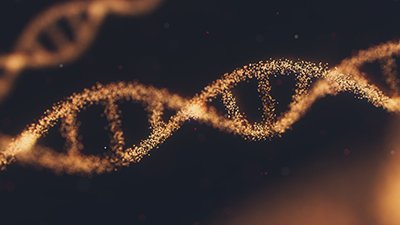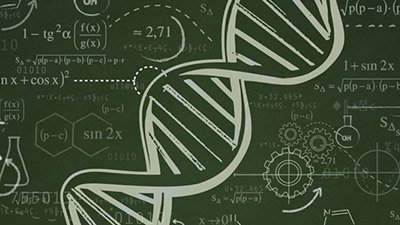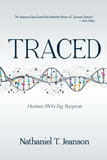
“Gay” Mice Can Make Babies?
The reality behind a disturbing experiment.
“The mice with two dads,” declared Nature, one of the top science journals in the world. “Researchers have made eggs from the cells of male mice—and showed that, once fertilized and implanted into female mice, the eggs can develop into seemingly healthy, fertile offspring.”1
Has modern science found a way around God’s design for sexuality and gender? A closer look reveals a different—if disturbing—picture.
The key technology at play in this case comes from the field of stem cells. These cells are a type of Swiss army knife for your body. During embryonic development, embryonic stem cells are the ones responsible for giving rise to your various organs and tissues, including, ultimately, sperm or egg.2
When I was PhD student in the early 2000s, technological advances in stem cell biology were galloping forward at a breakneck pace—with special relevance for this case of mice with “two dads.” Before I graduated, researchers had successfully reprogrammed adult cells back to an embryonic-stem-cell-like state, a finding that eventually scored a Nobel Prize3—and which was harnessed by the researchers in the present study.
Consider the ramifications of this technology. When adult cells are reprogrammed, their biological and developmental “clocks” are turned back, so to speak, to a very early developmental stage. In many respects, reprogrammed adult cells act like they are equivalent to actual embryonic stem cells. It’s like you’re creating a new life, but in the culture dish.
Now take this logic a step further. If reprogrammed adult cells are equivalent to actual embryonic stem cells, then these reprogrammed adult cells should be able to produce all the cell types that their embryonic counterparts do—including sperm and egg. Researchers have reported success on this front as well (e.g., see here).
But can two adult males (mice, in this case) have their cells reprogrammed to produce eggs?
But can two adult males (mice, in this case) have their cells reprogrammed to produce eggs? Don’t males normally produce sperm, not eggs? How can offspring be produced from “two dads”?
In short, they can’t.
For two males to reproduce, you have to first convert the cells from one of the males into female cells. And no, I’m not talking science fiction. This is what the researchers actually did.
They first reprogrammed cells from both male mice back to an embryonic state. At this stage of the process, the cells were all still male—possessing both an X chromosome and a Y chromosome. Then they waited for cells from one of the males to lose their male genetic material—the Y chromosome.4 At this stage, these genetically deficient cells now possessed only a single X chromosome, no Y chromosome.
These genetically deficient cells were poor candidates for producing eggs. To produce eggs, you need cells that have two X chromosomes. Consequently, as a next step, the researchers chemically induced these genetically deficient cells to return to a “normal” genetic state. They chemically forced them to have two chromosomes again—to realize an XX (rather than XY) chromosome state.
Effectively, they deleted the genetic instructions for “male” from one line of reprogrammed male cells, turning them genetically into female cells. Voilà, now they could produce eggs.
By the way, if this strikes you as impossible, consider the fact that adult males regularly produce females. Dads have sons and daughters. Normally, these females (daughters) are produced with the help of a woman. In this study of two “dad” mice, the female “offspring” were produced in the culture dish—in a process that, in some respects, resembles the process of cloning.
So, no, two “dads” did not sire offspring together. Instead, using new genetic tools and tricks, researchers bypassed the normal process of reproduction to turn male cells into female cells and then joined the resulting sperm and egg.5
They just went about the process of reproduction in a more perverse way.
Thus, even these researchers could not circumvent the biological realities for gender that God hardwired into creation from the beginning. They just went about the process of reproduction in a more perverse way.
Footnotes
- Heidi Ledford and Max Kozlov, “The mice with two dads: scientists create eggs from male cells,” Nature, March 9, 2023, https://www.nature.com/articles/d41586-023-00717-7.
- This developmental—and technological—potential has sadly seduced much of the scientific and medical community, at great ethical peril. See https://answersingenesis.org/sanctity-of-life/stem-cells/battle-stem-cells-over/.
- “Press Release,” Nobel Prize, October 8, 2012, https://www.nobelprize.org/prizes/medicine/2012/press-release/.
- After growing in the lab tissue culture environment for a certain length of time, this happens spontaneously. The researchers reported a spontaneous Y chromosome loss rate of around 6%. Ledford and Kozlov, “The mice with two dads,” 1.
- It’s worth noting that the success rate was very low—only 1.1% survival rate according to the Nature article.
Recommended Resources

Answers in Genesis is an apologetics ministry, dedicated to helping Christians defend their faith and proclaim the good news of Jesus Christ.
- Customer Service 800.778.3390
- Available Monday–Friday | 9 AM–5 PM ET
- © 2025 Answers in Genesis





